Whether you’re decluttering, discovering a new talent for making things, or are interested in the entrepreneurial lifestyle that comes from running your own store, there are many reasons people turn to the internet to sell practically anything they can think of.
That said, it’s one thing to have a fantastic best-selling idea for a product and quite another to actually sell your items. Whether you dream of the vast customer bases of eBay or Amazon, want to connect with the crafty shoppers on Etsy, prefer more casual marketplaces like Craigslist or Facebook, or are ready to build and market your very own online store… There’s an option for everyone to buy and sell online.
In this guide, we’re going to compile a complete list of online marketplaces for a range of different sellers, products, and shoppers, so you can connect to the perfect audience and get your products out there. We’ve compared everything from price to performance to help you find the perfect e-commerce platform for all your product needs.

Selling Platforms
Online marketplaces like eBay and Amazon are household names these days, and you can easily sell anything on one of these sites. Although you’ll have your own “store” on the platform, sellers benefit from millions of customers already using these well-known sites to buy everything from cat litter to designer handbags to “Weird Stuff.”
eBay

Founded in 1995, eBay is often considered the original online selling platform, enabling people around the world to sell anything to anyone. From bespoke items to online garage sales, there’s almost nothing you can’t buy on eBay.
The selling platform generally works like an auction, where you list items to sell (with or without a reserve), and buyers can ‘bid’, with the winner walking away with the product. Today, you can also list “buy it now” products with a set price.
The platform is intended to be incredibly easy to use, with anyone being able to open an eBay seller’s account and start selling on the platform in minutes. If you want a more professional online appearance, you can also open an eBay Store and benefit from extra features, including branding, personalization, and other marketing tools.
Possibly the biggest perk of selling on eBay is the vast audience. As of Q1 2021, there were 187 million active eBay users worldwide, and this appears to be steadily growing.
Not only does eBay offer a vast audience, but it also has an international reach, with users registered across 190 different markets.
The only potential downside to such a broad audience is that you’re also likely to experience plenty of competition, particularly in popular product categories. In Q1 2021, eBay reported over 1.3 billion listings, which exceeds the number of users on the platform, making it challenging for sellers to stand out from the crowds.
Costs
eBay charges two main types of selling fees: an insertion fee for listing an item and a ‘final value fee’, which comes into play when an item sells. These fees are all percentage-based, so the actual amount you’ll pay depends on the value of your product.
Each month, eBay allows you to list up to 250 insertion fee-free items. After that, the percentage you’ll pay depends on the product category.
When you sell an item, eBay will also charge a single final value fee. This will be a percentage of the total sale value (depending on product category) plus $0.30 per order. For most product categories, you’ll be looking at 10-12% of the item’s total price, including shipping.
Amazon

Amazon is arguably the most famous online marketplace in the world today. With over 4,000 items being sold PER MINUTE (Amazon, 2019) and 300 million active buyers worldwide, this trusted household name is one of the best online selling sites if you want access to a massive audience.
Although selling on Amazon is straightforward, the company can be relatively strict on who they will allow to set up an online store, and there is an application process you will have to pass before you can list your items.
While this might feel like an unnecessary hurdle for sellers, it is designed to make the selling platform safer for buyers. As we all know, Amazon has a reputation for being a trustworthy online marketplace with no spam stores and product listings shoppers can trust.
Amazon is well-known for offering some excellent dropshipping options in addition to its great Fulfilment By Amazon (FBA) options for SMBs. There are fees associated with dropshipping on Amazon (usually around 15% of your revenue), but this provides access to a massive selection of tools and a huge market to take advantage of.
While Amazon and eBay both contain plenty of fantastic integrated features, Amazon takes this a step further with the Amazon Partner Network. In the APN, you’ll find a large selection of approved third-party software and services to help you grow your business. With over 2,000 applications, 1,900 different services, and is available in more than 20 countries worldwide, there will almost certainly be an app for any additional service you want to provide.
In April 2021, Amazon launched its Amazon Audiences sponsored display functions. This enables sellers in selected areas to categorize and engage with customers in four new and exciting ways:
Costs
Amazon aims to make selling on the platform easy and personalized, with costs depending on your selling plan, fulfillment strategy, product categories, and other variables. There is flexibility in Amazon pricing, so you can find the perfect combo to suit your online store.
The cheapest option for selling on Amazon is to open an Individual Seller account. With this account, you’ll pay $0.99 per item plus percentage fees, depending on the product category. The Individual Seller plan is only suitable if you don’t sell more than 40 items per month.
The next seller plan is the Professional account. This costs $39.99 per month plus additional percentage-based selling fees and provides a plethora of extra features, including the ability to create bulk listings, inventory management tools, promotional features, multiple users, and more.
In addition to your selling plan, Amazon also charges Referral Fees for each item you sell on the platform. These will vary depending on the product category and are usually between 8% - 15%.
Depending on how you choose to run your store, there may be other costs associated with selling on Amazon, such as fulfillment fees, long-term storage costs, or premium account services.
Etsy
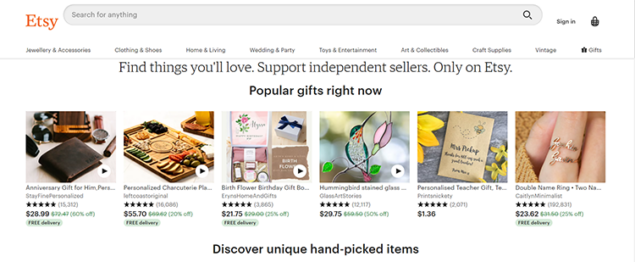
Etsy is probably the best online marketplace to sell handmade or bespoke items, art, collectibles, and antiques with a dedicated audience and growing online presence. Although Etsy is a relatively new online marketplace (founded in 2005 in Brooklyn, New York), its unique character and dedication to “unique and creative goods” has allowed it to become a household name and the best online marketplace for homemade items.
Building an Etsy store is quick and easy and doesn’t take much special knowledge. You’ll receive more tools if you opt for Etsy Plus ($10 per month), but even the Standard plan gives you access to everything you need to get started.
Like Amazon, eBay, and other online marketplace platform options, Etsy Standard doesn’t provide many customization options for your brand as you’re selling products based on Etsy’s reputation. However, if you upgrade to Etsy Plus, you’ll be able to stand out with loads of customization and branding options to get your store just the way you want it.
The primary marketing tool you’ll be using on this platform is Etsy Ads, a cost-per-click marketing strategy based on the Etsy algorithms to determine the likelihood of a customer buying your product. There is plenty of guidance for advertising on Etsy available in the Etsy Ultimate Guide to Advertising.
Costs
Etsy prides itself on “simple, transparent, secure” pricing plans with no additional monthly fees and plenty of seller protection.
On a Standard sellers’ account, you’ll be charged a $0.20 listing fee that covers the listing for up to four months. When you make a sale, you’ll pay a further 5% transaction fee in addition to a 3% + $0.25 payment processing fee. The final cost to consider is a 15% offsite ads fee, but you will only pay this if you make a sale from an ad placed via Etsy’s Offsite Ads feature.
If you want to build a more prominent online store with Etsy, you might want to upgrade to the Etsy Plus plan. This includes an expanded selection of tools to build your brand and costs $10 per month.
Ruby Lane
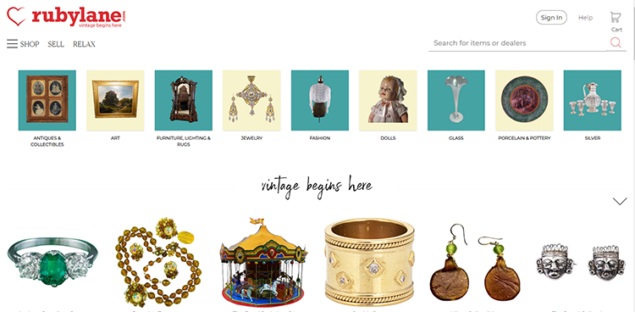
Ruby Lane might not quite have the same levels of fame as eBay, Amazon, or Etsy, but that certainly doesn’t mean it should be overlooked as one of the best places to sell products, particularly if those products are antiques or vintage. In fact, in 2019, Ruby Lane was voted the number one selling venue by the e-commerce Bytes survey and receives over 1.8 million unique visitors every month.
Although Ruby Lane has a global market, most customers are based in the US, Canada, UK, Australia, or Germany, and almost all describe themselves as “collecting enthusiasts.” This means the audience is likely to be more purposeful and educated than you might find on Amazon and eBay. Therefore, you may be able to present higher prices but will also need to provide more in-depth product descriptions.
Costs
Regarding seller fees, Ruby Lane is one of few free selling platforms with no setup costs or listing fees.
However, there is a $25 per month maintenance fee (although this may be reimbursed if you add 15 product listings during the month). In addition, there will be a 9.9% service fee on the Purchase Order total. This doesn’t include sales tax and is capped at $250.
Bonanza

Bonanza is another relatively new online marketplace (founded in Seattle in 2007), but that certainly hasn’t stopped it from making waves as one of the best places to sell items in almost any category.
A good way to think about this selling platform is as an Amazon / eBay hybrid, falling somewhere in the middle of these online marketplaces. It’s often considered one of the best places to sell your products as it’s effortless to use and took first place in the 2021 e-commerce Bytes Sellers Choice Awards for “customer service,” “communication,” and “most recommended marketplace,” among other awards throughout the years.
One of the best things about selling on this website is that Bonanza automatically sends every item listing to Google and Bing to increase visibility. What’s more, sellers have the option to advertise listings on a variety of other channels, including Pricegrabber, Nextag, and Bonanza’s own affiliate advertising program.
Costs
Unlike many other online marketplaces, Bonanza doesn’t charge anything to set up an online store on the website, nor does it charge any listing fees. This means the business doesn’t make money unless you do. The seller fees that do exist are based on the Final Offer Value, which is the combined dollar value of the item’s sale price, plus any shipping fees that exceed $10.
In other words, if you sell your item for $20 with a $12 shipping fee, the Final Offer Value would be $22.
For items with a Final Offer Value under $500, Bonanza will charge 3.5% of the FOV for “standard booths.” For FOVs above $500, you’ll be charged an additional 1.5% of the value above this amount.
You may also want to take advantage of Bonanza Advertising. Advertising fees range from 9% - 30% of the FOV depending on the options you select and can be adjusted at any time. The higher rate you select, the more buyer visits from Google Shopping and other sources you’ll be able to take advantage of.
Local Sales and marketplaces
When selling products online, you don’t necessarily want to sell to a global marketplace and would prefer to make an easy sale to someone in your local area. Perhaps the shipping fees vs order value make global shipping prohibitive, or maybe you just have a few items to sell that don’t require you to start your own online business.
Whatever your reasons, these local online marketplaces are a great way to connect sellers with customers in their local areas with minimum fees or complications.
Facebook Marketplace

Facebook Marketplace leaped onto the online selling scene in October 2016 and quickly became a go-to for quick and easy sales around the world. The platform was developed to bring communities together to buy and sell items, revolutionizing how people use social media to research and buy products.
Today, more than one in three people with active Facebook accounts in the US use Facebook Marketplace to buy and sell items every month. And while you don’t need to be an online business to sell products on this platform, Facebook does allow e-commerce retailers to list products on the marketplace from a variety of online stores and platforms, including Shopify, BigCommerce, and many more.
In fact, today, Facebook Marketplace is an essential marketing channel that any online business should be focusing on.
Costs
Believe it or not, Facebook Marketplace does actually allow you to sell online for free, making it one of the best internet sales platforms for sellers on a budget.
However, although Facebook Marketplace is a rare free selling platform, there are a few guidelines you need to follow when using Facebook for selling online or for digital marketing.
Craigslist
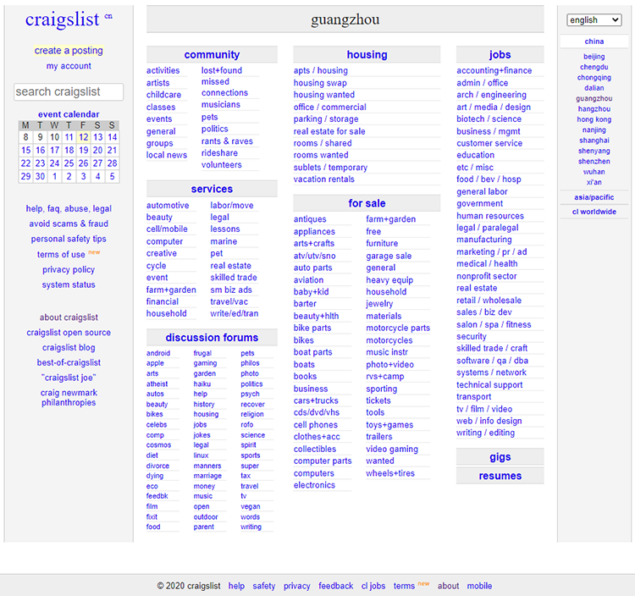
Craig Newmark founded Craigslist in 1995 to provide information on local events in the San Francisco Bay area. Now, Craigslist is one of the best places to sell anything you can think of… And we really mean anything!
The forum-turned-online-store might not be the most attractive website, but it does make buying and selling online incredibly simple with no frills, listing fees, transaction fees, or selling fees. There’s even a “free” section where people offer free items they no longer want (a lot of this will be junk, but you can find some absolute gems here if you have a good eye!).
The downside to the convenience of Craigslist is that it is very unregulated. That means if you get taken advantage of, but something that isn’t as marketed or are paid with fake money, you’re 100% on your own.
Today, Craig’s website has touched almost every part of the world, with millions of online sales taking place throughout the year.
Costs
Whether you’re selling rare art, collectibles, antiques, complete junk, or even yourself (yes, really, check the “personals” section), Craigslist is a hugely popular selling platform as it charges absolutely no fees to build an account and sell online.
Nextdoor
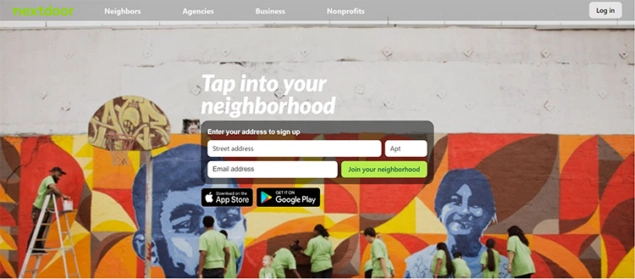
Similarly to Facebook Marketplace and Craigslist, Nextdoor combines social media with online shopping with an app, forum, and website dedicated to connecting people in their local areas.
Because it requires individuals to sign up and create an account, Nextdoor is considerably safer than Craigslist, and users tend to experience far fewer scams on the platform.
Listing items to sell on Nextdoor is incredibly straightforward once you have an account. All you need to do is download the app and click the plus sign at the bottom of your smartphone. From here, simply create a new message and post it in the “for sale and free” section of the platform.
Nextdoor isn’t necessarily the best platform if you’re looking to set up an e-commerce business. Still, it can be an excellent option if you need to declutter or don’t want to deal with shipping and just want to sell to customers who are local to you.
That said, it is also possible to create a free business account on Nextdoor, and there are advertising options available to e-commerce businesses, brands, and agencies.
Costs
Nextdoor is one of the best websites to sell stuff for free as there are absolutely no join up, listing, or transaction fees to worry about. However, you will need to meet buyers in person to exchange.
Build your own store
Now we’ve looked at where to sell products online from a personal point of view, it’s time to switch it up and look at some more professional options for creating your own best-selling sites and online stores. With these internet sales platforms, you’ll be able to start selling your products and services in an attractive and professional online store with the ability to connect to and advertise on multiple sales channels.
Shopify
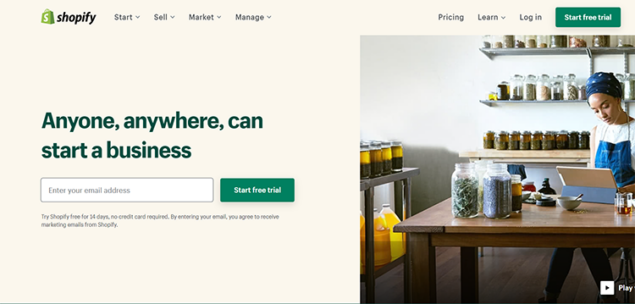
When it comes to finding the best platform to build an online store and start selling, Shopify tends to take the gold. Providing the best combination of usability, affordability, customization, and add-ons, you really can’t go wrong when using this e-commerce platform to get your online store set up.
Shopify was initially created in 2004 as a way for the founders to build a website and sell snowboards online. While SnowDevil might not have changed the world, the program these young people had created became the #1 online store building tool worldwide, with over 1,700,000 businesses powered by the platform.
It’s quick and easy to launch a Shopify-powered website, and there are plenty of options to help make your store your own. In addition to many integrated features and tools, the Shopify App Store lets you effortlessly add on pretty much any extra services or software you could possibly want, from additional email marketing tools to live chat apps to SEO help and so much more.
Costs
Shopify offers a range of price plans to suit your business needs, with additional features available at each level of the monthly fee:
- Shopify Lite: $9 per month
- Basic Shopify: $29 per month
- Shopify: $79 per month
- Advanced Shopify: $299 per month
- Shopify Plus: enterprise solution requiring a custom quote. Prices start at $2,000 per month.
It’s worth noting that Shopify Lite won’t actually enable you to create an online store on the platform. However, you will get “Buy Buttons” to transform any existing sites into an e-commerce platform. You’ll also be able to use the Shopify POS app and hardware, which enables you to track inventory and reports even if an item is sold in offline marketplaces or elsewhere.
Wix
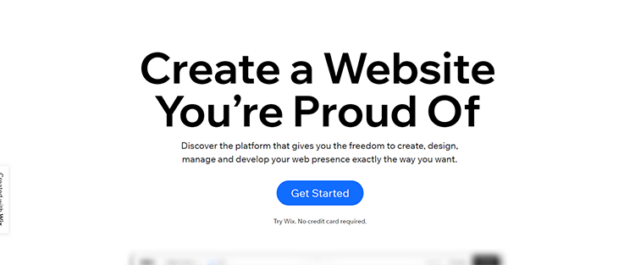
Wix offers a viable competitor to Shopify’s e-commerce store building capabilities, with customization options and all the essential e-commerce features you need to start selling online.
Originally designed to be a simple website builder for content-based sites, Wix added e-commerce features later that packs a surprising punch in the online sales universe. It may be perfect for small businesses or bloggers who want to add merchandise sales to their site.
In addition to plenty of features that make sales simple and enable you to efficiently complete your inventory and reporting needs, all Wix price plans also come with the Wix POS hardware for monitoring any item sold in offline or alternative marketplaces. The Wix POS also enables you to benefit from local delivery, staff accounts, and more that make building a business straightforward.
Costs
Wix’s pricing is broken into two categories: “website” and “business.” The website plans are cheaper, but you won’t have any options to sell online using these plans without an add on such as Shopify’s Buy Buttons.
To sell on a Wix site, you’ll need a business plan. These involve a monthly fee of $23 to $49, depending on the features and abilities you want. Wix also offers an Enterprise plan starting at $500 monthly for larger businesses.
Squarespace

Another competitor to Shopify that was created initially as a website builder, Squarespace tends to be the preferred choice for business owners looking to create the most visually stunning online store – perfect for selling things like art, collectibles, or vintage items that require a beautiful presentation.
Squarespace was founded in 2003. However, it is still a relatively new e-commerce platform as it didn’t provide the ability to create an online sales platform until 2013. However, that doesn’t mean it’s not more than capable of building the best websites to sell stuff online and has quickly become one of the most popular selling platforms available.
Costs
Squarespace offers five price plans to its 3.79 million customers, with more features being available the higher fee you pay:
- Personal: $16 per month
- Business: $26 per month
- Basic Commerce: $30 per month
- Advanced Commerce: $46 per month
- Squarespace Select: Custom pricing
Squarespace does allow discounts if you can afford to pay for an annual subscription, which can be attractive for SMBs.
Magento

Magento and Adobe Commerce is a powerful site-building platform that powers well-known brands and sellers, including Nike, Ford, Samsung, Nestle, Louboutin, and many more. With complete control and adjustment capabilities, Magento makes it simple to customize your online store and features a plethora of extras to help you attract and retain customers.
That said, Magento might not be suitable for smaller sellers, as you won’t just need to worry about the sale price when using this platform. Hosting, themes, add-ons, and almost everything else is charged individually, although there are no fees to download or use the site builder.
This is a premium solution best suited to larger businesses with an established customer base ready to take their sales to the next level.
Costs
Magento 1 and 2 are free to download and use. However, you will need to pay for any other sales features you wish to incorporate on your site.
The Adobe Commerce enterprise-level plan can only be priced following a consultation with a sales rep. It’s reported that these plans can cost anywhere from $22,000 to $125,000 per year.
WooCommerce
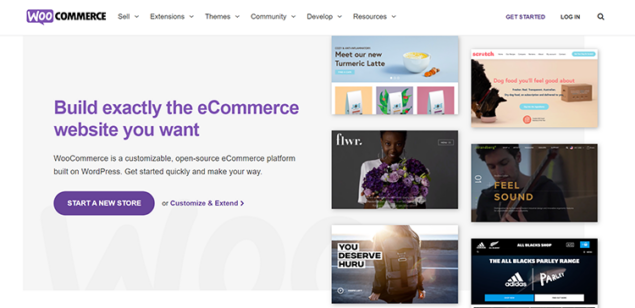
Powered by WordPress, WooCommerce offers a straightforward open-source e-commerce platform to help you set up and manage a customizable sales site.
On the homepage alone, WooCommerce provides attractive examples of sites selling everything from turmeric lattes to backpacks to dog food.
The innovative plugin works with any WordPress site, so it’s an excellent way to start selling products on your existing website or blog and includes all the e-commerce features you could want without the need to download apps or add-ons. There’s no need to touch a single line of code, and you’ll also benefit from 24/7 customer support.
Costs
The fastest way to get started with WooCommerce is using the “simple setup” with WordPress.com. This plan costs $49 monthly.
Alternatively, WooCommerce also provides the opportunity for developers to self-build their stores by downloading the source code. This enables “unlimited control” over the appearance and functionality of your site. Pricing varies for the self-build plans.
Niche-specific sites
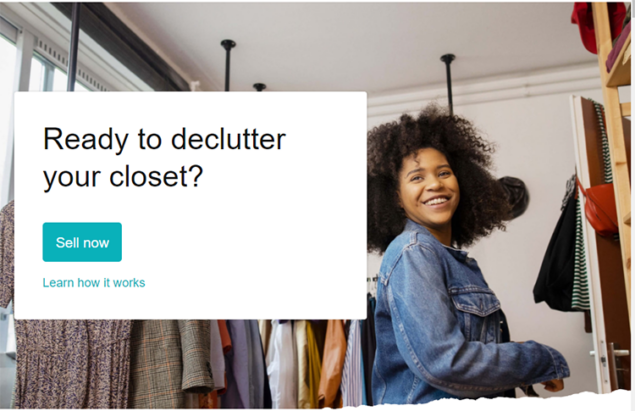
If you have something specific that you want to sell or are building a niche brand that you want to take to market, you might also want to consider niche-specific selling sites to connect with your potential customers.
There are probably millions of niche-specific sites out there, with dedicated customers who will always be willing to buy what you’re selling.
While it wouldn’t be practical for us to create a complete list of online marketplaces in every niche, we have found some of the top online selling platforms in best-selling industries to help get you inspired on your sales journey.
- Poshmark – Clothes
- Cardaddy – Cars and vehicles
- GearTrade – Outdoor equipment
- Chairish – Furniture and home décor items
- Apolloduck – Boats
- Vinted – Vintage clothing
- Kidizen – Gently used kid’s clothes and shoes
The costs of selling your stuff on these sites will vary, but there will likely be some form of transaction fee per item sold. You may also need to pay a maintenance fee and take control of any shipping costs.
However, niche-specific sites are a fantastic way to connect your items with customers who really care about what they’re buying. In many cases, profit margins can be higher than sites like Amazon or eBay, as shoppers are more dedicated to their purchases.
Final Thoughts
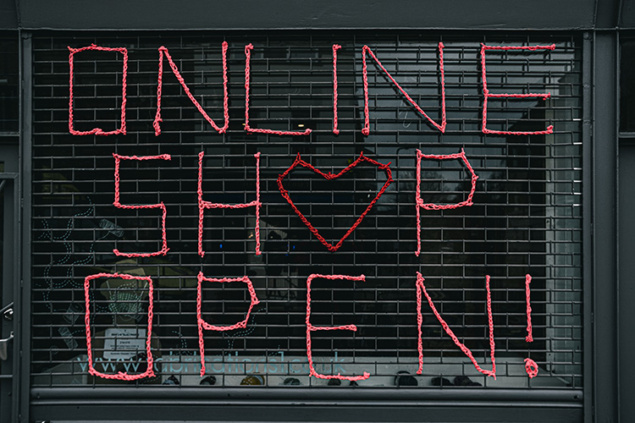
Although you might have clicked on this article hoping we would tell you what the best online marketplace to sell your products is, it’s worthwhile not picking just one of the best platforms for selling.
Most e-commerce builders will enable you to integrate your sales across multiple channels and platforms, exposing you to far more customers than you will get from simply picking one online market to advertise your items.
For example, if you build a Shopify store, you’ll be able to link this with your social media platforms and sell your items directly on channels such as Facebook Marketplace. With Shopify POS, you can even keep track of offline sales, use apps like Oberlo to effortlessly update multiple channels and advertising platforms, and add Buy Buttons to existing websites.
Not only is this incredibly beneficial from a marketing point of view, but these integrations and apps will also streamline the process for you: so, your inventory and reporting are always up to date, no matter how or where you make a sale.
FAQ
Which platform is best to sell online?
The best platform to sell online will really vary depending on what you have to sell and whether you’re looking to grow a business or just make a few sales.
For business owners, you’re probably going to want to build your own website that will act as your online store. Site builders such as Shopify are fantastic for this and will even let you integrate your store with other channels, social media platforms, and marketplaces for a well-rounded experience and plenty of exposure to customers.
If you don’t want to start a business and just have a few items to sell, you might not need to build your own site. In this case, easy-access online selling sites are likely to be more appropriate for you. Try eBay and Facebook Marketplace for exposure to plenty of customers with low barriers to entry. If you’re selling something appropriate, creating a listing on a niche site can also be an excellent way to sell.
How do I set up a platform to sell online?
If you want to create websites to sell stuff, you’ll need to start by picking an e-commerce platform host. These include sites such as Shopify, Wix, Squarespace, and more.
Usually, building a website is relatively simple, and there will be plenty of resources available with your chosen platform to help you get started.
Suppose you prefer to take advantage of an existing online platform to sell products (such as Amazon and eBay). In that case, you’ll need to open an account with the online marketplace you wish to sell through, then follow the instructions to transform it into a seller’s account and create a listing.
No matter which sourcing and selling platform you select, the best selling sites will always contain plenty of guides and support to help you streamline the sales process and sell your products with confidence (with perhaps the exception of Craigslist, which takes a very “you’re on your own” approach to listings!).
What is the easiest platform to sell online?
The easiest online platform to sell products is probably eBay. Although Amazon is straightforward to use, the application and verification process makes it a more involved selling platform than eBay, which will allow you to start selling in minutes.
Bonanza is also considered an incredibly seller-friendly platform and has won multiple awards since it was founded in 2007. This platform also offers intuitive and thorough advertising options to help you build brand awareness via Google Shopping and other sources.
What is the best selling platform?
Statistically, Amazon is the best-selling platform in the US. According to recent industry figures, Amazon made close to 386 billion US dollars in 2020 net sales. With over 200 million Amazon Prime members worldwide and 214.43 million unique visitors to Amazon websites monthly, the pure scope and success of Amazon cannot be overstated.




